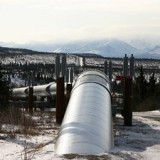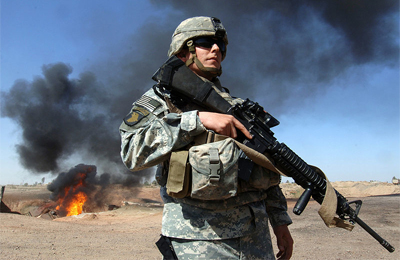Article by Carrie Tait in the Financial Post. “After two years of revamping its PR strategy, the Canadian Association of Petroleum Producers hopes it can trump, even pre-empt, its critics’ charges.”
Read article
Tag Archives: Alberta Tar Sands

Enbridge Pipeline: A scary vision of the future
The
hearings for the proposed Enbridge Pipeline from the Tar Sands to Kitimat have
begun – the first of these having been held recently in Whitecourt Alberta,
with more coming coming to Kitimat on August 31 and Prince George on September
8. We’ll surely be hearing a lot from
the company about the employment this project would provide. That is the ever-present
argument in any debate where the environment is threatened.
As I said
in the question period after a recent speech, if the temporary employment
provided during construction trumps environmental concerns, we might as well
all go home.
I have no
doubt that employment will be a plus for this pipeline but we must remember
that it is temporary – the damage will be permanent. And let’s be clear on this
point: there will be leaks, and a long pipeline will be an open invitation to
terrorism. Moreover, there is no guarantee that the employment will go to local
British Columbians.
And it’s
the value to this province I think we should dwell upon for a moment.
We would
have a pipeline shipping Alberta crude to China, largely through very sensitive
land in BC. Where’s the profit for us? We take the certainty of damage to our
sensitive grazing land, added to which is the certainty of s spill on our
sensitive coast – and for what? I’ve heard nothing about big bucks for the
right-of-way. We’re not getting any part of the taxes which will be paid to
Alberta and Ottawa. We are the conduit for oil sludge benefitting international
oil companies, Edmonton, Calgary, Ottawa, and Beijing. Why the hell are we even
considering this?
I talk
about certainty rather than risk. That’s because a risk, without a limit on how
long it will continue, is a certainty waiting to happen.
Last May
I wrote an article for a Russian online paper, The Strategic Culture Foundation, which I think apropos – I hope
you enjoy it.
Tuesday
January 23, 2013
Today, with the weather cold and clear in
Washington, D.C., Barack Obama was sworn in for his second term after a
landslide victory where he carried all but two states. He had capitalized on
his stern warnings that the United States had to get, in American football
parlance, into a “hurry up offence” to wean itself off its reliance on oil as
offshore supplies were looking less and less reliable.
That very afternoon, reminiscent of the day Jimmy
Carter heard upon the inauguration of his hated rival Ronald Reagan that Iran
had released its American hostages, the new fundamentalist Peoples Islamic
Republic of Arabia (formerly Saudi Arabia) announced it was reducing its oil
exports to the US by10% each month until the US withdrew all support –
financial and military – of Israel. Mr. Obama pointed out that out of the 30
million barrels a day the US consumes (up since he first became president, in
spite of efforts to reduce consumption) Saudi Arabia supplied only 1.5 million
barrels – slightly more than Venezuela and about the same as Mexico. The
president, in warning about the crisis, took solace in the fact that its
largest supplier, at just under 3 million barrels, was their old and faithful
friend, Canada.
That day oil traded just under $200 per barrel, but
instantly went up to $225 on the news from Arabia.
Thursday,
July 4, 2013
On the nation’s birthday – and as oil broke through
the $300 mark – President Obama put the nation on a national emergency basis on
the announcement by President Chavez of Venezuela that “in light of continuing
Yankee interference with Latin American affairs, Venezuela will, in the absence
of ‘improvement’ by the US, cut off all oil supplies.” This, along with
continuing unrest in Mexico, was, in the president’s words, “very grave news
indeed.”
The New York Times in its lead editorial asked,
“What went wrong? What had happened to the will to reduce reliance on oil which
had peaked back in 2009?”
The Canadian ambassador, in an op-ed article,
pointed out that this was similar to the collapse of the cod fishery on the
east coast of Canada in 2002 when fishermen demonstrated unto near riot in
protest against the government closing the fishery, demanding the right to fish
even though there were none left. “Human nature,” observed the ambassador, “has
no end to its ability to go into denial.”
December
24, 2013
 President Obama announced that earlier that day the
President Obama announced that earlier that day the
7th US
airborne had landed in Northern Alberta, Canada, near the “Tar Sands” and had
sent small contingents of troops into Edmonton and Victoria, the capitals of
the Canadian provinces of Alberta and British Columbia, respectively. Mr.
Obama, in a terse note to the Canadian ambassador said “no great nation, least
of all the United States of America, can tolerate any country cutting off its
oil supply. Once our imports from Canada are increased we will withdraw our
forces, leaving only a ‘token’ presence.”
(This was not, incidentally, the first time the US
had invaded Canada – it did so in 1775, and again in 1812 in the war known by
that date. Each time they were sent packing but in those days Canada was a
British colony and Britannia still ruled the waves.)
How could this have happened?
In Northern Alberta there is a huge mud pie –
except the mud is caused by oil not water. As early as 1956 when this author briefly worked for Imperial
Oil, the huge deposits of this goop were spoken about. (I left Edmonton upon
learning that, unlike Vancouver, my native city, Alberta has real winters).
The tar sands are prohibitively expensive to “mine”
and, besides, easy access to oil in Alberta would never end. All this changed
when oil went over $100 and, almost overnight, the Tar Sands became the new
“find.” Even though the oil was hugely difficult to extract and refine – and
the largest contributor to greenhouse gases in the world – it was huckedly buck
and away we go!
How did this lead to the US Canada border – called
the longest undefended border in the world – being violated?
You must go back to the spring of 2010 and an item
in the business news that China had invested $2 billion in these Tar Sands. A
pipeline to the Pacific Coast was needed and this from the builder: ”Enbridge
envisages two parallel 1,170-kilometre pipelines between northern Alberta and
Kitimat, B.C. One would carry 525,000 barrels a day of oil westward, largely
from the oilsands. The eastward line would transport 193,000 barrels a day of
imported condensate, used to thin heavy petroleum products moving by pipeline.”
There was hell to pay with aboriginal and
environmental groups that protested, sometimes physically, not only because the
pipeline encroached on wildlife grazing grounds but over the dangerously loaded
tankers moving south along the treacherous British Columbia coast. It was only
in August 2012 that the Supreme Court of Canada, in a rare move which caught
everyone by surprise, turned aside aboriginal complaints. This was immediately
followed by the federal government ordering construction to begin.
Up until this time no one really foresaw that this
would mean trouble. After all, all oil from the tar sands went south of the
border; what could go wrong?!
China
was the problem. Most of the oil through the pipeline was destined for China.
The US government needed this oil and meant to get it. For two years Obama
threatened dreadful things including high tariffs against Canadian goods,
notwithstanding NAFTA. Nothing worked.
As
the short but devastating debate moved on, Canada asked China to intervene,
thinking that the huge US debt to that country would help. China reminded
Canada of two things: 1. It’s a hell of a long way from China to the Tar Sands;
2. While China was the US banker, it had to be remembered that a bank’s largest
asset is what is owed to it – that if China were to reduce the value of the US
dollar it would be, so to speak, pooping in its own nest.
Thus
it came to pass that for third time the US invaded Canada, and this time there
was no one there to help.
‘Constant Denial’: Liberal Report on Tar Sands Is Scathing
Article by Andrew Nikiforuk in The Tyee. “Calling for sweeping reforms and strong federal leadership on water science, the referenced 49-page report concluded that the Canadian government clearly lacks ‘proper knowledge on the state and dynamics of the regions water resources and how they will react to years of oil sands mining, both surface and in situ.'” Read article
Humpback Whales

Audio: Damien Gillis discusses Enbridge proposal on CJSF

Close encounter of the whale kind
You must see this eye-popping footage of a recent rare close encounter with a humpback whale off the coast of BC’s spectacular Great Bear Rainforest. Whales like this one and many other coastal species are at grave risk from Enbridge’s proposed pipeline to pump oil from the Tar Sands across BC and into supertankers in Kitimat, before plying some of the world’s most treacherous waters en route to Asia. This awesome creature approached a boat carrying among others filmmaker Damien Gillis, and proceeded to interact playfully with the crew for 45 minutes! Watch highlights of this amazing and unique west coast experience – caught on camera. And stay tuned for a new documentary for Pacific Wild by Damien Gillis on the proposed Enbridge pipeline and coastal tankers, coming soon to PacificWild.org and TheCanadian.org!
Oil reserves put Canada’s Great Bear Rainforest under the lens
Article in National Geographic, with photos by Ian McAllister.
Cristina Mittermeier, president of the International League of Conservation Photographers: “With the ongoing oil disaster we are witnessing in the Gulf of Mexico, and the State of Michigan, Canada should reconsider bringing oil to the Great Bear Rainforest.”

Enbridge pipeline: what’s in it for us?
The Enbridge proposed pipeline from the Tar Sands to Kitimat has been much in focus since the terrible spill by Enbridge into the Kalamazoo River recently. This is the same company – which has a pathetic safety record, incidentally – that proposes a “1,170-kilometre pipeline moving petroleum from Edmonton to the deep-sea port of Kitimat on the central B.C. coast, and a smaller companion pipeline moving condensate along the same route”.
(See Fallout from Enbridge’s Michigan oil spill spreads to B.C., by Carrie Tait and Julie Fortier in the Financial Post.)
British Columbians should be asking a lot of questions, which they no
doubt will, which will be answered by the first class PR division of
Enbridge. One of their favourite answers – and I’m not sure the example
is right but it’s only by way of illustration – is that there are only 300
barrels of oil spilled for every 1,000,000 shipped. As I say, the
numbers could be different but they ignore, conveniently, that the
oil/sludge isn’t spilled 100 barrels at a time.
Let’s look at what’s in it for BC.
In a word, virtually nothing.
This isn’t a BC company employing the people of BC. There are no taxes from
Enbridge. At best perhaps some “peppercorn” rent for the right-of-way.
And what do we get?
A disaster waiting to happen!
A gloomy prediction?
Of course it is but it’s a fact. It’s simple mathematics and logic.
If you took a revolver with one hundred chambers and just one bullet and
started pulling the trigger with the barrel at your temple, and you
decided to do it 10 times, you run a risk and you can calculate it.
If you decided to do it steadily for one hour, you run a risk and can
calculate it.
If, on the other hand, you pull that trigger with no limit as to numbers
or no time limit, it ceases to be a risk but is a certainty waiting to
happen.
Thus it is with a pipeline. And thus it is with the Trans-Alaska
pipeline which spilled 5,000 barrels last May, which is only one of many.
The citizens of Alaska wish to God they’d never approved it in the first
place.
Now we’re not only dealing with a certain rupture of the pipeline, we’re
dealing with the uncertainty as to where the breach will come, how much will be spilled, and what damage will be done. The pipeline traverses some of the
most important grazing regions of caribou, not to mention our great
wilderness which, according the Campbell government, is the “best place
on earth”.
Enbridge presents this undertaking as great news for Northern BC and
Alberta. No doubt it helps Alberta to move its product – oil sludge – to
its market (China) but what does it do for Northern BC?
We hear of employment but never are told that most of that employment will
come from outside the province – nor that it will come mainly as short term construction jobs. In this regard it’s reminiscent of the
so-called “run-of-river” projects where the projects typically hire only a third local, and they are the lowest paying jobs.
Who’s going to patrol this pipeline and make sure that safety measures
are observed?
Presumably the same people who police the fish farms and the private
power people in whose interest it is to exceed their flow regimes.
It’s interesting to note that the oil/sludge, when it reaches Kitimat,
is no longer Enbridge’s responsibility but that of the tanker outfit
which probably flies a flag of convenience and is effectively not only
ill equipped to handle a spill but has no assets to speak of as well.
Do you think for a moment that Gordon (Pinocchio) Campbell will insist
upon a very large bond to be posted by Enridge or the tanker companies?
Right! And pigs can fly.
This project, then, does nothing for BC and presents the certainty of oil spills both on land and, once it gets to the tanker to China, on our coast.
This is, plainly, a great deal for Enbridge and oil/sludge producers but a lousy one for BC and ought not to be even countenanced.
Federal MPs cancel oilsands pollution probe, destroy report
Article by Mike De Souza in the Vancouver Sun.
“The government is in the process of categorizing industry-produced substances that could either be toxic or harmful, but has excluded naphthenic acid from the list, and left it off another list of substances that companies are required to track and report.
“The exclusion is ‘alarming,’ according to a letter sent Tuesday to Environment Minister Jim Prentice and Health Minister Leona Aglukkaq, since the federal and Alberta governments have already identified it as a primary source of pollution in liquid waste dumped into ponds after companies extract oil from the region.”
Fallout from Enbridge’s Michigan oil spill spreads to BC
Article by Carrie Tait and Julie Fortier in the Financial Post. “[Enbridge CEO Pat] Daniel said earlier Wednesday that the company will sit down with opponents of its proposed Northern Gateway pipeline to the Kitimat, B.C. to discuss the concerns they may have in the wake of the Michigan spill.”
Read article.
Article by Tim Martin of the Associated Press: Gov’t warned company about oil pipeline monitoring
